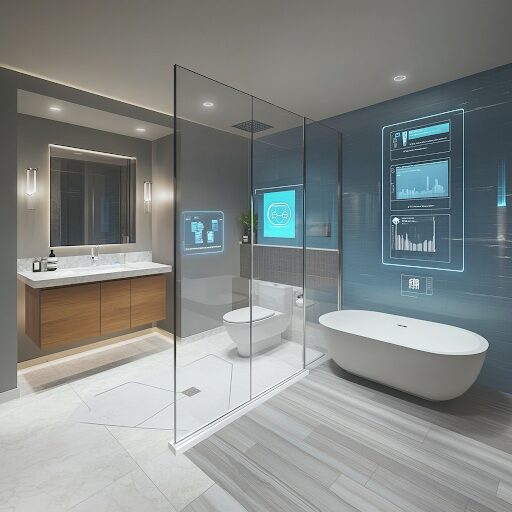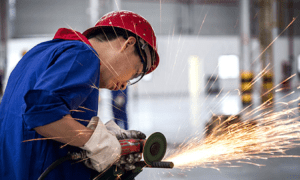The intersection of artificial intelligence and home improvement is creating a seismic shift in how consumers approach modern bathroom renovation projects. Like how fintech disrupted traditional banking by making financial services more accessible and efficient, AI-powered modern bathroom renovation platforms are democratizing interior design and making sophisticated renovation planning available to everyone with a smartphone. This technological revolution represents more than just a new set of tools; it’s fundamentally changing the economics and accessibility of home improvement in the same way blockchain transformed transaction verification.
Think of traditional renovation planning as the equivalent of old-school banking with paper forms and lengthy approval processes. The emergence of AI design tools mirrors how digital payment platforms streamlined financial transactions, removing friction and reducing costs. Today’s comprehensive renovation transformation solutions are powered by algorithms that can process design preferences, spatial constraints, and budget parameters in real-time, much like how modern fintech applications instantly assess creditworthiness and provide personalized financial products.
The parallel between AI renovation tools and fintech innovation becomes even more striking when we examine their shared mission: eliminating traditional gatekeepers and reducing costs while improving outcomes. Just as peer-to-peer lending platforms bypassed traditional banks, smart bathroom technology integration is allowing homeowners to bypass expensive design consultations while achieving results that often surpass what traditional methods could deliver.
The Algorithmic Advantage in Design Decision-Making
Modern AI design platforms operate on principles remarkably similar to the algorithmic trading systems that have revolutionized financial markets. These tools process vast datasets of design trends, spatial relationships, and user preferences to generate optimized layouts faster than any human designer could manage. The technology behind bathroom renovation AI mirrors the machine learning approaches used in robo-advisors, where complex algorithms analyze multiple variables to provide personalized recommendations.
The processing power involved is genuinely impressive. Leading platforms can analyze room dimensions, plumbing constraints, natural light patterns, and personal style preferences simultaneously, generating multiple design variations within seconds. This computational approach to design resembles how cryptocurrency mining pools coordinate distributed processing power to solve complex problems efficiently.
What makes this particularly relevant to the tech-savvy audience is how these platforms leverage computer vision and neural networks to understand spatial relationships. Users can upload a simple photo of their existing bathroom, and AI algorithms automatically detect fixtures, measure spaces, and identify potential optimization opportunities. This seamless integration of visual recognition technology with design intelligence creates an experience as smooth as modern mobile banking applications.
Economic Disruption Through Democratized Design
The financial implications of AI-assisted renovation planning cannot be overstated. Traditional interior design consultations typically cost between $100 to $200 per hour, with complete bathroom designs often reaching thousands of dollars before any actual renovation work begins. AI platforms have compressed this entire process into subscription models costing less than a typical streaming service, representing the same kind of cost reduction we’ve seen in digital-first financial services.
This pricing disruption extends beyond consultation fees. AI tools provide accurate material quantity calculations, reducing waste and preventing over-ordering that traditionally added 15-20% to project costs. The precision mirrors how algorithmic trading reduces transaction costs by optimizing execution timing and order sizing.
Smart budgeting features within these platforms function like personal finance apps, tracking expenses in real-time and alerting users when they’re approaching budget limits. Some advanced tools even integrate with home improvement loan platforms, creating an ecosystem that handles everything from design to financing in a single interface.
Blockchain-Style Transparency in Project Management
Perhaps the most intriguing development is how AI renovation platforms are implementing transparency features reminiscent of blockchain technology. Every design decision, material selection, and budget allocation gets recorded in detailed project histories that all stakeholders can access. This creates an immutable record of project evolution that prevents the miscommunication and scope creep that traditionally plagued renovation projects.
Contractors can access the same AI-generated plans and specifications that homeowners see, eliminating the telephone game effect that often leads to costly misunderstandings. This shared source of truth functions like a distributed ledger, ensuring everyone operates from identical information.
Real-time progress tracking integrated with these platforms provides the same kind of transparency that made cryptocurrency transactions revolutionary. Homeowners can monitor project milestones, budget adherence, and timeline compliance with the same granular visibility that blockchain provides for financial transactions.
Smart Integration and IoT Connectivity
The most sophisticated AI renovation platforms are beginning to integrate with smart home ecosystems, planning not just for current needs but for future technology adoption. These systems can recommend outlet placements for smart mirrors, specify wire routing for automated lighting, and design spaces that accommodate future smart home upgrades.
This forward-thinking approach mirrors how modern fintech platforms design their architectures to accommodate future regulatory changes and emerging payment methods. The renovation planning becomes an exercise in future-proofing that extends far beyond immediate aesthetic concerns.
Voice-controlled design interfaces are emerging that allow users to modify plans through natural language commands, much like how voice banking is transforming financial services. The ability to say “make the shower larger and add a bench” and watch the AI automatically adjust layouts, recalculate costs, and identify any potential complications represents the same kind of user experience innovation that has driven fintech adoption.
Data-Driven Material and Vendor Selection
AI platforms are leveraging marketplace data to provide real-time pricing information and vendor comparisons that function like financial comparison sites. These systems monitor pricing across multiple suppliers, track delivery times, and even predict material price fluctuations based on market conditions and seasonal trends.
The vendor rating systems integrated into these platforms use review aggregation and performance analytics that mirror the reputation systems used in peer-to-peer lending platforms. Contractors and suppliers build verifiable track records that get factored into AI recommendations, creating accountability mechanisms that traditional renovation projects often lack.
Supply chain optimization features within advanced platforms can identify alternative materials that maintain design integrity while offering cost savings, functioning like the portfolio optimization algorithms used in wealth management. This systematic approach to material selection removes much of the guesswork and emotion that can derail renovation budgets.
The Investment Perspective on AI Renovation
From an investment standpoint, the AI renovation space is attracting the same kind of venture capital attention that fintech commanded in its early stages. The market size represents a massive opportunity, with home improvement spending exceeding $500 billion annually in North America alone, yet the industry remains remarkably fragmented and inefficient.
The scalability of AI solutions mirrors what made fintech companies so attractive to investors. Once the algorithms are developed and trained, they can serve unlimited users simultaneously without proportional increases in operational costs. This creates the same kind of exponential growth potential that drove valuations in the digital payment and lending sectors.
Integration opportunities with existing home improvement retailers, contractors, and financial services companies create multiple monetization pathways. These platforms are positioning themselves as the operating systems for home renovation, much like how payment processors became essential infrastructure for e-commerce.
Looking Forward: The Convergence Continues
The convergence of AI, financial technology, and home improvement is accelerating rapidly. Emerging features include real-time construction loan integration, automated permit application processing, and predictive maintenance scheduling based on material selections and usage patterns.
Smart contracts for renovation projects are being tested, where payments automatically release based on completion milestones verified through computer vision and IoT sensors. This automation of project management and payment processing represents the natural evolution of both renovation services and financial technology.
The long-term trajectory suggests that AI-assisted renovation will become as standard as mobile banking, fundamentally changing consumer expectations for service delivery, transparency, and cost efficiency. For technology investors and enthusiasts, this represents not just a new set of tools, but a complete reimagining of how major consumer purchases and projects get planned, financed, and executed.
The revolution has already begun, and like most technology-driven disruptions, the early adopters are gaining significant advantages in both cost savings and project outcomes. The question isn’t whether AI will transform home renovation, but how quickly traditional players will adapt to this new paradigm.





























